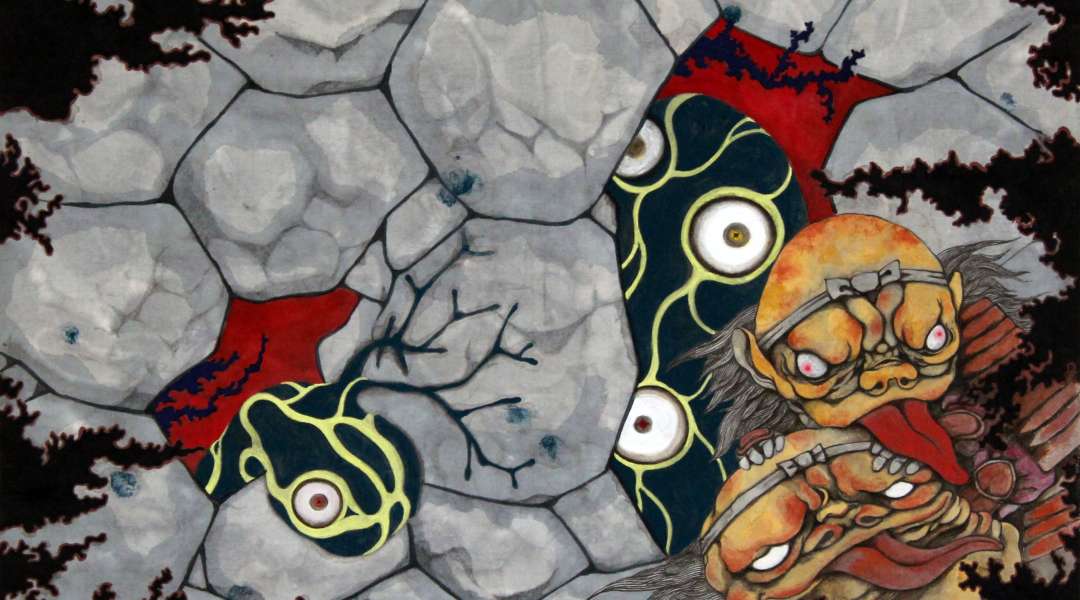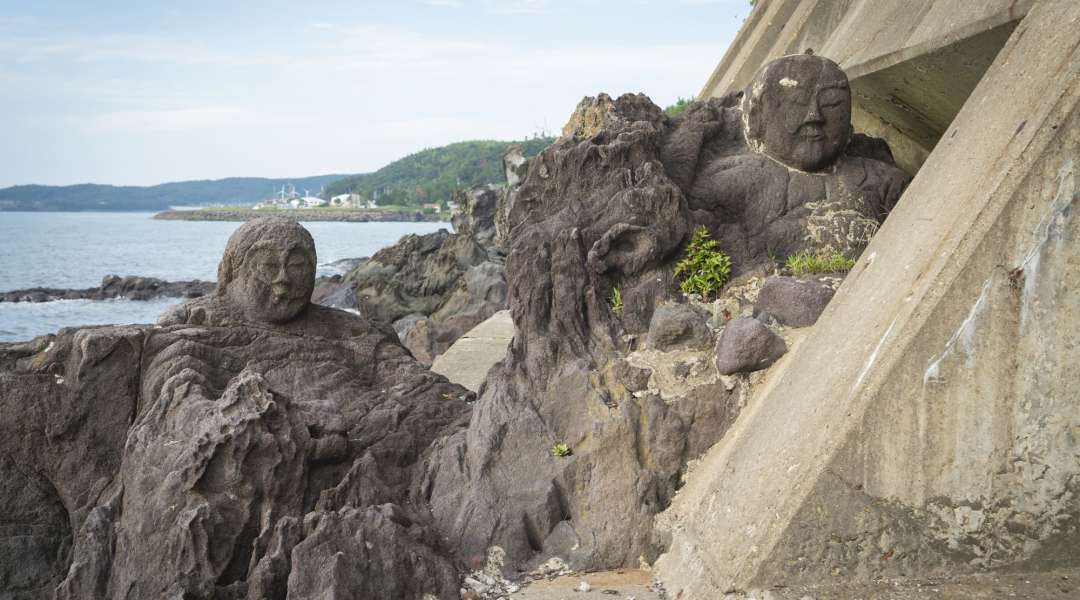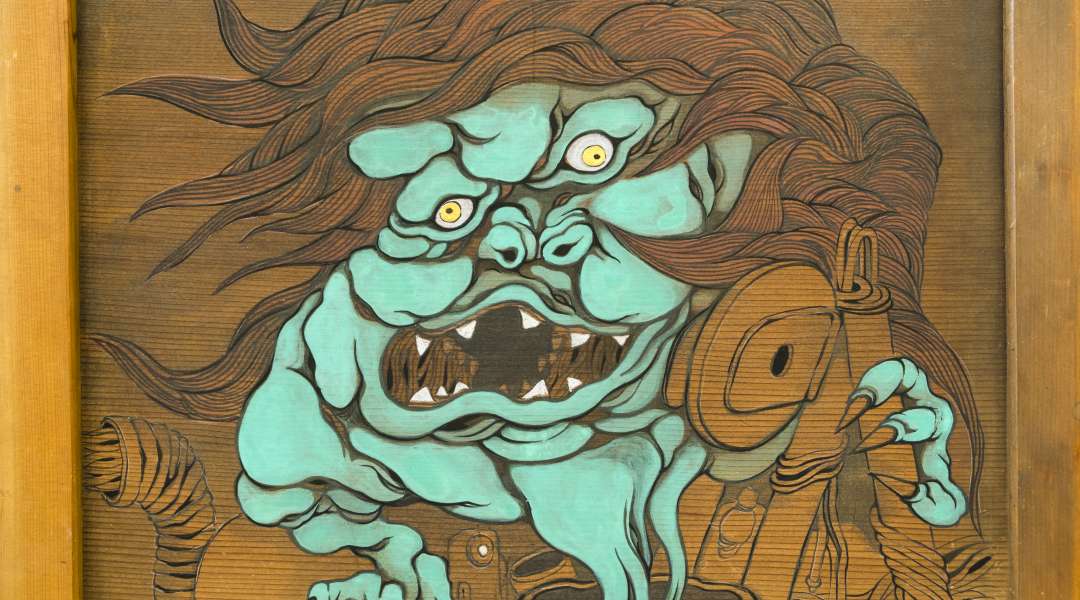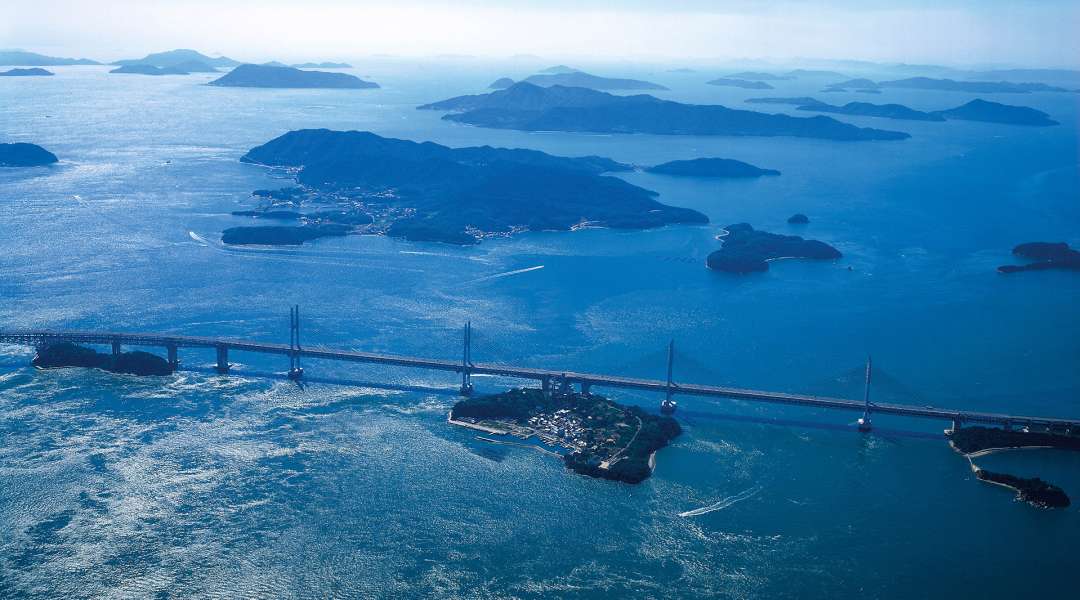 A mural by Chubei Yagyu. As your eyes adjust to the darkness of the room, you begin to see the different forms ©Chubei Yagyu
A mural by Chubei Yagyu. As your eyes adjust to the darkness of the room, you begin to see the different forms ©Chubei Yagyu
Deep in the labyrinthine streets of Shodoshima island’s ‘maze town’, imps hide on street art and eyeballs peer down from rooftops. All point to one destination - the Yokai Bijutsukan Art Museum. The concept of the ‘yokai’ spirits is a fuzzy one but has birthed some of the most iconic pieces of Japanese pop culture such as The Ring, Pokémon and the Amabie sea creature said to help protect Japan from the spread of Covid-19. But what exactly are they and what are they doing on a quaint island in Japan’s inland sea? We spoke to the man behind the museum, Chubei Yagyu, to find out more.
Hi Yagyu-san, thanks for speaking to us! Tell us a little bit about yourself and your work as a ‘yokai’ artist to kick us off.
My name is Chubei Yagyu and I was born on Shodoshima Island, here in the Seto Inland Sea. From a young age, I was always fascinated with the idea of being a ‘yokai’ spirit and so that would be when I began drawing them, but really my career as a ‘yokai’ artist started from about 2005. As for my tools and my style, what I always aim for is to be an artist who can work in an infinite number of ways with an infinite number of materials.
 Chubei Yagyu standing in front of one of his murals ©Chubei Yagyu
Chubei Yagyu standing in front of one of his murals ©Chubei Yagyu
What was it that made you decide to be a ‘yokai’ artist?
The first time I drew a ‘yokai’ spirit would have been in pre-school. I read Gegege no Kitaro, the pinnacle of ‘yokai’ manga, and thought I would love to draw them myself, so I started there. After graduating from university, I got a normal job like everyone else but got to thinking about what kind of job I should really be doing and what kind of job I could see myself giving my all to, and realised that, being a ‘yokai’ manga artist was really the only thing for me.
The word ‘yokai’ is often translated into English as ‘ghost’, ‘phantom’, ‘faerie' 'monster' etc. Does that sound right to you?
I feel strongly that the definition of a ‘yokai’ is very broad. For example, from a Japanese perspective, even Dracula or werewolves can be classified as ‘yokai’. The Japanese understanding of spirituality really becomes important. Japan’s native religious practices were nature worship. There’s a thinking there that believes that ‘gods’ reside in everything around us, even in our possessions, and this is what led to the birth of these things we call ‘yokai’. These hundreds on thousands of ‘gods’ make themselves known and turn up in all sorts of everyday situations. ‘Yokai’ are the same. In the kitchen, for example, there’ll be ‘gods’ and there’ll also be ‘yokai’.
 The Juroku Rakan Iwa spiritual carvings of Yamaguchi prefecture
The Juroku Rakan Iwa spiritual carvings of Yamaguchi prefecture
The main distinction between ‘gods’ and ‘yokai’ then is probably that, the former are officially worshipped and the latter are not. It's also difficult to speak about in general terms, and researchers in Japan will have opinions that vary wildly from each other but my personal take on ‘yokai’ is that its a being that can’t be seen, but is there to accompany us and help us learn from it. For me, they’re not solely ‘scary beings’ but ambivalent beings that do both good and bad things.
If you could become a ‘yokai’ spirit, which would you choose, and why?
It’s one of my own personal creations but it would be the Ekaki (‘draw picture demon’) - a ‘yokai’ whose whole body is a pen from top to toe and who is constantly drawing. I want to continue drawing until my very last breath so that’s why I chose that one.
 A work of yokai art by Chubei Yagyu ©Chubei Yagyu
A work of yokai art by Chubei Yagyu ©Chubei Yagyu
What is most interesting about ‘yokai’, in your personal opinion?
Their appearance, their backstories, even their names - they all come from the local land and are hugely diverse. I would say that’s definitely one of the big compelling aspects.
There are so many of them, all with different folk legends attached, varying shapes and sizes, crazy names that come from local dialects...
When it comes to ‘yokai’, do you have any favourite tales or stories?
It’s a tale from my local area, Shodoshima island, but there’s this one about ‘Kaboso’ who’s always pulling pranks. There are all these stories about how it’ll disguise itself as a fisherman’s wife in order to steal fish, or tease locals by mimicking the voices of their friends and family. I really like the ones where one particular ‘yokai’ has several different rumours or anecdotes about it.
 The Seto Ohashi Bridge spanning the Seto Inland Sea ©Kagawa Prefecture Tourism Association
The Seto Ohashi Bridge spanning the Seto Inland Sea ©Kagawa Prefecture Tourism Association
What can you tell us about the Yokai Bijutsukan Art Museum that you help run, for readers in the UK who might be planning trips to Japan, or Shodoshima?
The Yokai Bijutsukan Art Museum is a collection of exhibitions focusing on works that embody my art as well as pieces that we’ve collected from the Yokai Art Prize Competition that we run regularly. They’re all very thoughtful and meaningful pieces that tell stories and that I’m very proud of. I find the ability to turn things into characters or mascots is quite a Japanese skill or method. It’s a big part of the culture and represents our spirituality. That's something I love for people to come and see and experience. The Art Museum is split across five different buildings in the part of downtown that people call ‘maze town’, too, so exploring the twisty roads and side streets while looking around the galleries is also a big part of the appeal, I think.
 The strip of beach on Shodoshima known as Angel Road, at low tide ©Kagawa Prefecture Tourism Association
The strip of beach on Shodoshima known as Angel Road, at low tide ©Kagawa Prefecture Tourism Association
Finally, are there any particular parts of where you’re from that you’d like to recommend to people planning to visit Japan?
The stunning archipelago of the Seto Inland Sea is one of Japan’s hidden gems, in my opinion. As just one of those, Shodoshima island has both mountains and sea, as well as a great assimilation of old Japan and the benefits of bigger towns and cities. The people here are all lovely and kind, and I’d love for people to come and feel that firsthand.
Thank you very much for your time Yagyu-san!
To experience some of Japan's yokai first-hand from your couch, check out our Japan fan guide to the smash hit game Ghostwire: Tokyo here
For more information on all things otherworldly in Japan, check out our round up of Japan's most haunted spots here!
To stay up to date with all the latest happenings in Japan follow us on Facebook or Twitter.

















































